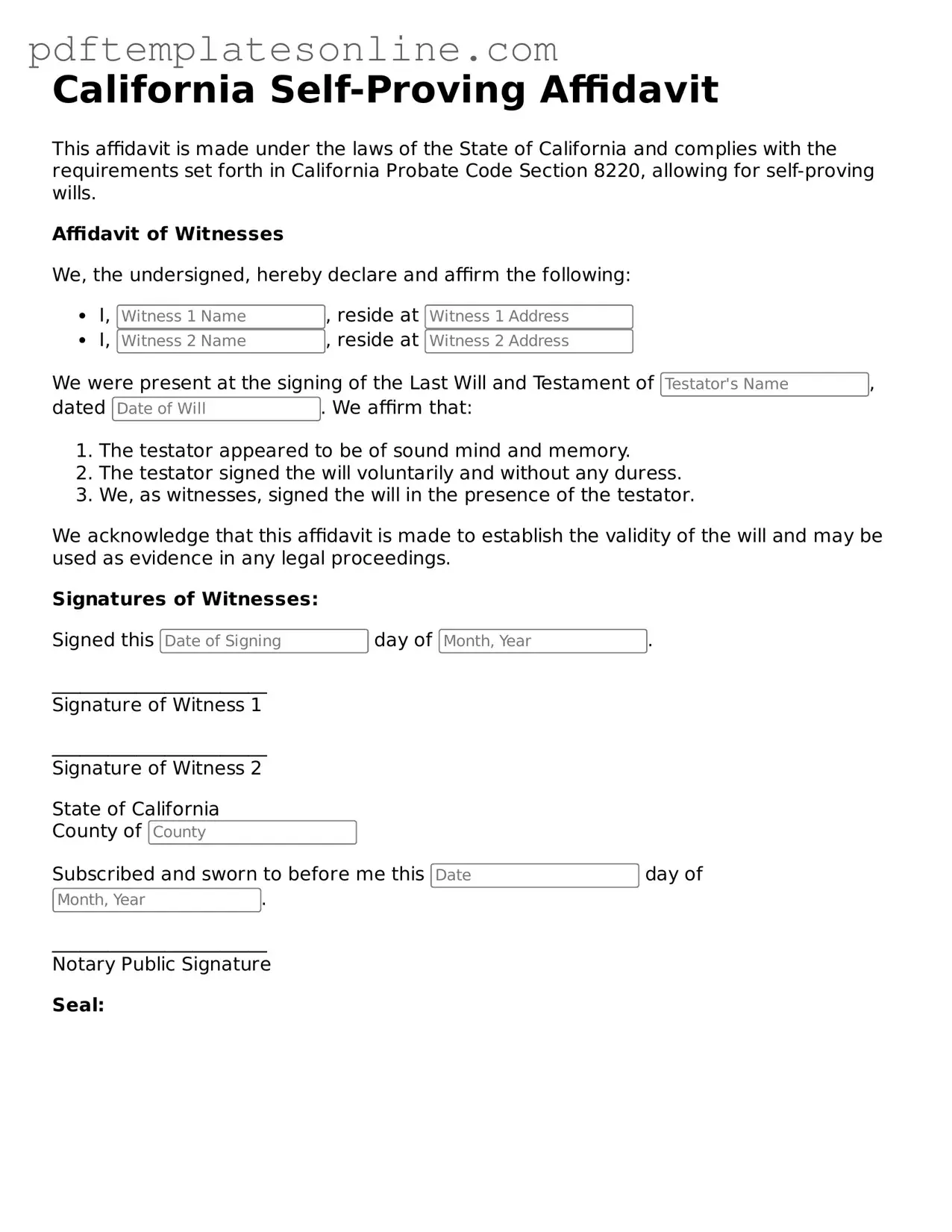Filling out the California Self-Proving Affidavit form can seem straightforward, but many individuals encounter common pitfalls that can lead to complications later on. One frequent mistake is not having the document signed in the presence of a notary public. This is crucial because the notary's role is to verify the identities of the signers and ensure that the signatures are authentic. Without this step, the affidavit may not hold up in court.
Another common error is failing to provide complete information about the witnesses. The form requires the names and addresses of the witnesses who observed the signing of the will. Omitting any of this information can create confusion and may invalidate the affidavit. It's essential to double-check that all details are accurate and clearly written.
Some individuals mistakenly think that the affidavit can be signed at any time after the will is created. However, it should be signed concurrently with the will or shortly thereafter. Delaying this process can lead to questions about the validity of the will itself. Timing is key in ensuring that the affidavit serves its purpose effectively.
Additionally, many people overlook the importance of reviewing the entire form before submission. Errors in spelling, grammar, or formatting can detract from the professionalism of the document. Such mistakes may lead to misunderstandings or disputes among heirs. Taking a moment to proofread can save a lot of trouble down the line.
Another mistake is neglecting to ensure that all signers are of sound mind and not under any undue influence. The affidavit should reflect that the testator and witnesses are acting voluntarily and understand the implications of their actions. If this aspect is not adequately addressed, it could lead to challenges against the will in the future.
People also sometimes forget to include a declaration stating that the will was executed in accordance with California law. This statement reinforces the legality of the document and provides added assurance that all necessary steps were followed. Without this declaration, the affidavit may lack the authority it needs.
It's not uncommon for individuals to skip the date on which the affidavit was signed. This detail is crucial for establishing a timeline of events, especially if there are multiple versions of the will. Including the date can help clarify which document is the most current and valid.
Another oversight involves not keeping copies of the completed affidavit. After signing and notarizing the document, it is vital to make copies for personal records and for the beneficiaries. This ensures that everyone involved has access to the necessary documentation if needed in the future.
Lastly, some people may forget to follow up on the filing of the affidavit with the appropriate court or repository. While the affidavit is often attached to the will, ensuring that it is properly filed can prevent complications later on. Staying organized and proactive about these details can make a significant difference.
By being aware of these common mistakes, individuals can take steps to avoid them and ensure that their California Self-Proving Affidavit is filled out correctly. This will help safeguard their wishes and provide clarity for their loved ones in the future.
